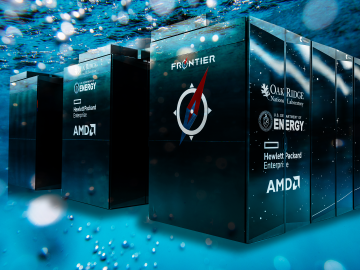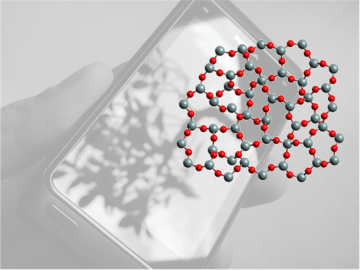
Filter News
Area of Research
News Topics
- (-) Physics (9)
- 3-D Printing/Advanced Manufacturing (24)
- Advanced Reactors (4)
- Artificial Intelligence (38)
- Big Data (21)
- Bioenergy (13)
- Biology (18)
- Biomedical (10)
- Biotechnology (8)
- Buildings (25)
- Chemical Sciences (23)
- Clean Water (5)
- Climate Change (30)
- Composites (10)
- Computer Science (33)
- Critical Materials (7)
- Decarbonization (30)
- Education (2)
- Emergency (1)
- Energy Storage (12)
- Environment (30)
- Exascale Computing (16)
- Fossil Energy (3)
- Frontier (13)
- Fusion (10)
- Grid (11)
- High-Performance Computing (29)
- Isotopes (15)
- ITER (1)
- Machine Learning (16)
- Materials (21)
- Materials Science (24)
- Mathematics (5)
- Microelectronics (2)
- Microscopy (2)
- Molten Salt (1)
- Nanotechnology (2)
- National Security (29)
- Net Zero (7)
- Neutron Science (22)
- Nuclear Energy (12)
- Partnerships (22)
- Polymers (5)
- Quantum Computing (16)
- Quantum Science (18)
- Security (4)
- Simulation (20)
- Space Exploration (3)
- Statistics (3)
- Summit (10)
- Sustainable Energy (24)
- Transportation (14)
Media Contacts

Researchers used the Summit supercomputer at ORNL to answer one of fission’s big questions: What exactly happens during the nucleus’s “neck rupture” as it splits in two? Scission neutrons have been theorized to be among those particles emitted during neck rupture, although their exact characteristics have been debated due to a lack of conclusive experimental evidence of their existence.

Researchers led by the University of Melbourne, Australia, have been nominated for the Association for Computing Machinery’s 2024 Gordon Bell Prize in supercomputing for conducting a quantum molecular dynamics simulation 1,000 times greater in size and speed than any previous simulation of its kind.

Nuclear physicists at the Department of Energy’s Oak Ridge National Laboratory recently used Frontier, the world’s most powerful supercomputer, to calculate the magnetic properties of calcium-48’s atomic nucleus.

Scientists have determined that a rare element found in some of the oldest solids in the solar system, such as meteorites, and previously thought to have been forged in supernova explosions, actually predate such cosmic events, challenging long-held theories about its origin.

Researchers conduct largest, most accurate molecular dynamics simulations to date of two million correlated electrons using Frontier, the world’s fastest supercomputer. The simulation, which exceed an exaflop using full double precision, is 1,000 times greater in size and speed than any quantum chemistry simulation of it's kind.

Researchers used quantum simulations to obtain new insights into the nature of neutrinos — the mysterious subatomic particles that abound throughout the universe — and their role in the deaths of massive stars.

In May, the Department of Energy’s Oak Ridge and Brookhaven national laboratories co-hosted the 15th annual International Particle Accelerator Conference, or IPAC, at the Music City Center in Nashville, Tennessee.

When scientists pushed the world’s fastest supercomputer to its limits, they found those limits stretched beyond even their biggest expectations. In the latest milestone, a team of engineers and scientists used Frontier to simulate a system of nearly half a trillion atoms — the largest system ever modeled and more than 400 times the size of the closest competition.

Corning uses neutron scattering to study the stability of different types of glass. Recently, researchers for the company have found that understanding the stability of the rings of atoms in glass materials can help predict the performance of glass products.


